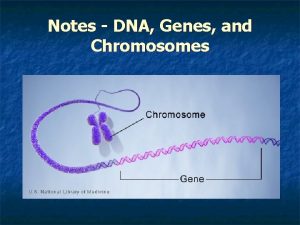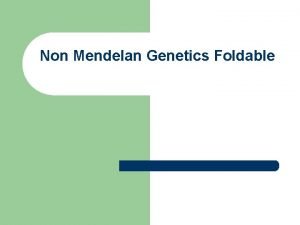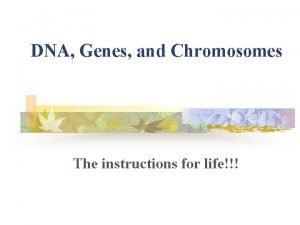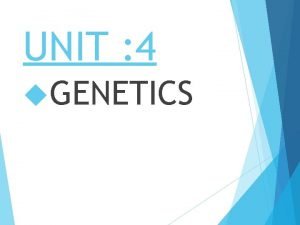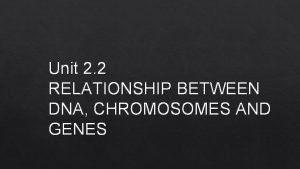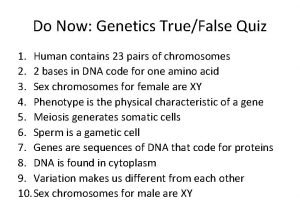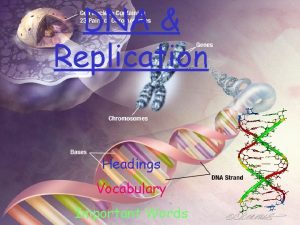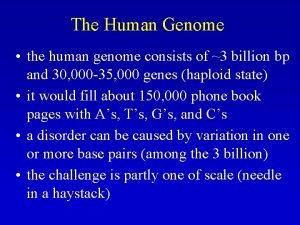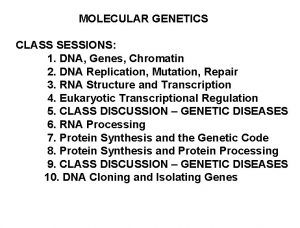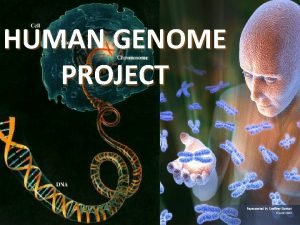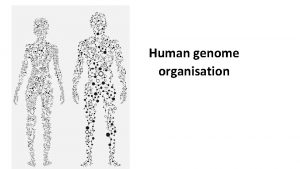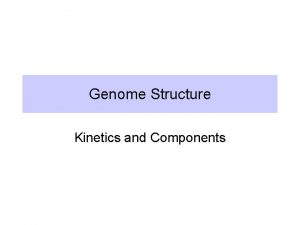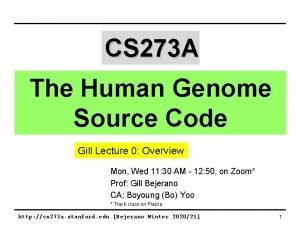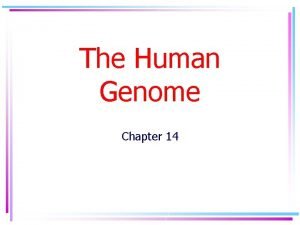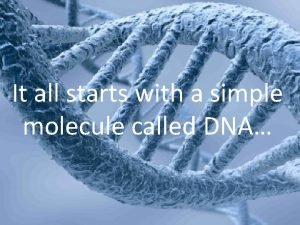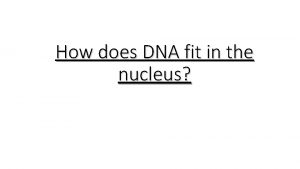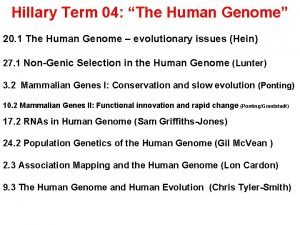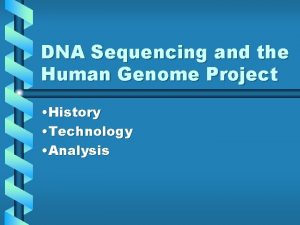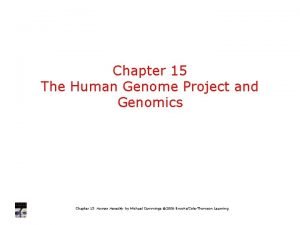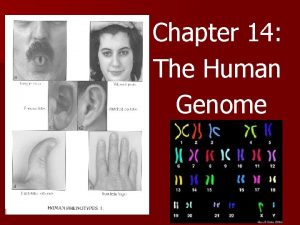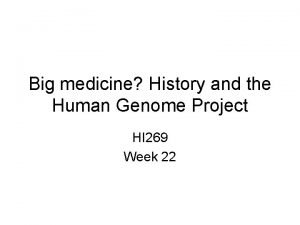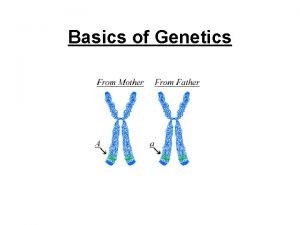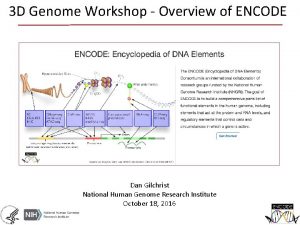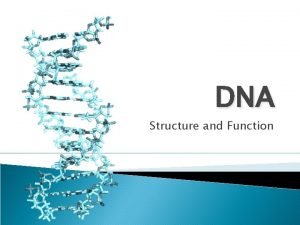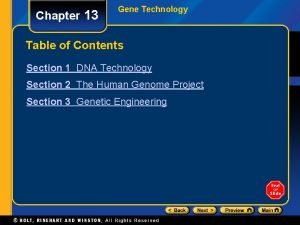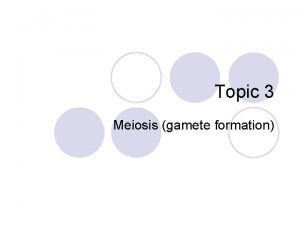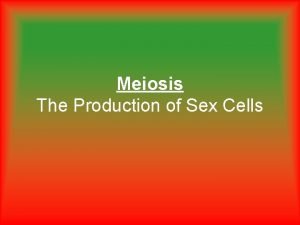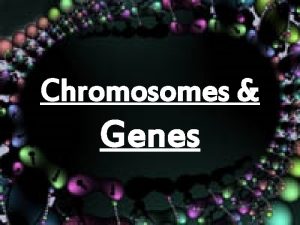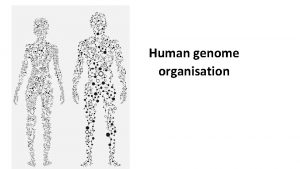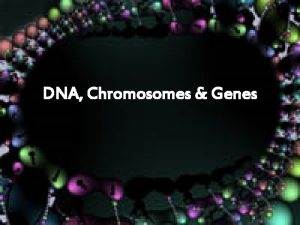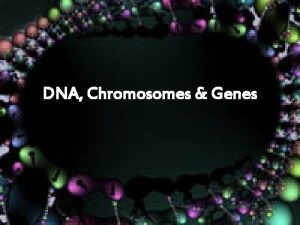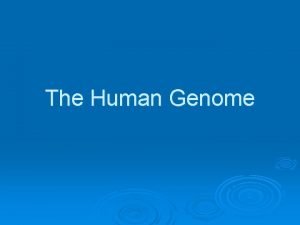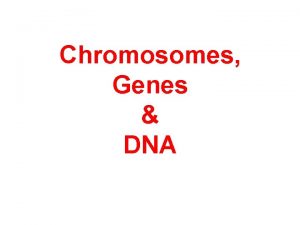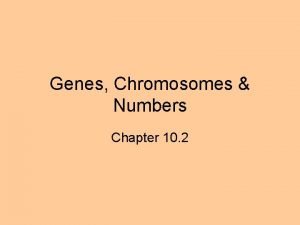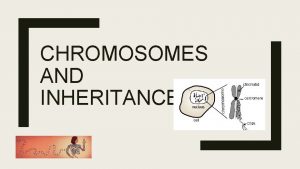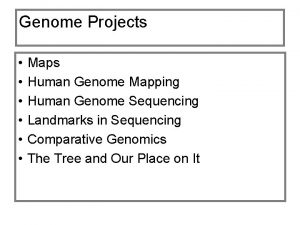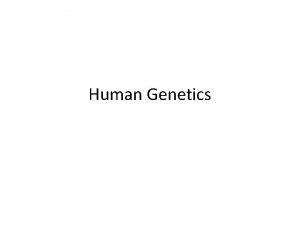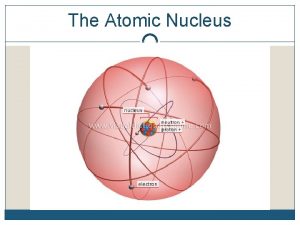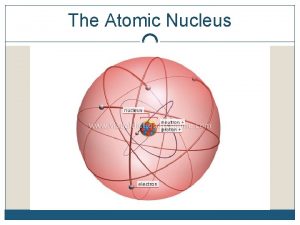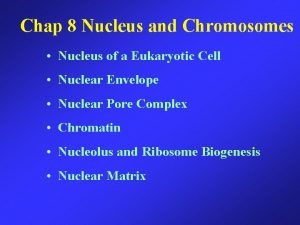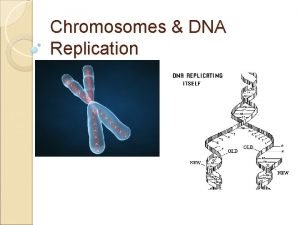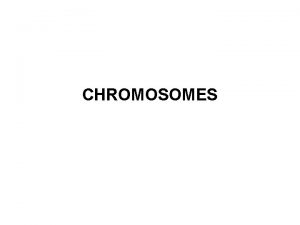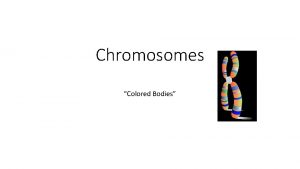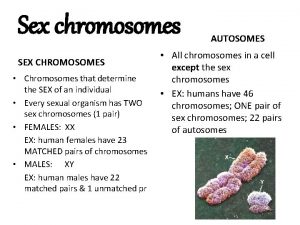Chromosomes Genes GENOME The nucleus of a human















![• A chromatid is "one-half of two [normally] identical copies of a replicated • A chromatid is "one-half of two [normally] identical copies of a replicated](https://slidetodoc.com/presentation_image_h/1ceb74606d2e2b6ce95069578a062ec9/image-16.jpg)

















- Slides: 33

Chromosomes & Genes

GENOME The nucleus of a human cell contains between 30 000 and 40 000 genes. This complete set of genes is called the GENOME.

The structure of the genome

The structure of the genome • Tightly coiled threads of deoxyribonucleic acid (DNA) and associated protein molecules. • Organized into structures called chromosomes.

CHROMOSOMES


• Rod-shaped dark stained nucleoprotein bodies seen during mitosis metaphase. • The name chromosome was given by Waldeyer in 1888. • They can be clearly visible during cell division. • Composed of thin chromatin threads called chromonema.

What are CHROMOSOMES? • A packet of coiled up DNA. • Humans have 23 pairs of chromosomes. • They are in the nucleus of cells.

What are CHROMOSOMES? • Chromosomes contain a single, long piece of DNA. • A chromosome is about 0. 004 mm long. • The DNA is about 4 cm long. • This is about 10 000 times longer than the chromosome. – So it has to twist and coil to fit inside.

What are CHROMOSOMES? • There are 23 pairs of chromosomes in the nucleus of any one of your cells. • Each chromosome has a single strand of DNA (deoxyribonucleic acid) which carries the code for a couple of thousand genes.

CHROMOSOME NUMBER • Two main types: 1. Somatic chromosome number (2 n). It is the number of chromosome found in somatic or meristematic cell of a species. 2. Gametic chromosome number (n). It is one half of the somatic number. Haploid number.

CHROMOSOME SIZE • It shows variation depending upon the stage of the cell. • Longest & thinnest chromosome seen during interphase. • In prophase, decrease in their length with an increase in thickness. • Smallest chromosome seen during anaphase.

• Plants possess longer chromosome than animals. • Smallest chromosome is about 1/80, 000 in length.

CHROMOSOME MORPHOLOGY 1. Chromatid 2. Centromere 3. Telomere 4. Nucleolus organizer region 5. Chromomere

CHROMATID • Structural & functional unit of chromosome. • A chromatid contains 8 sets of the replicated DNA of each individual chromosome, which are joined by a centromere, for the process of cell division(mitosis or meiosis).
![A chromatid is onehalf of two normally identical copies of a replicated • A chromatid is "one-half of two [normally] identical copies of a replicated](https://slidetodoc.com/presentation_image_h/1ceb74606d2e2b6ce95069578a062ec9/image-16.jpg)
• A chromatid is "one-half of two [normally] identical copies of a replicated chromosome“. • The two copies may have slight differences due to mutations. • A chromatid is simply a copied chromosome which is paired with a (normally) identical chromosome at the centromere.

CENTROMERE • The centromere is the part of a chromosome that links sister chromatids. • Classified as: 1. Localized centromere 2. Neo centromere (False) 3. Non-localized centromere Ø Polycentric (Diffused having more than two centromeres) Ø Holocentric (Entire length acts as centromere)

• According to the position, centromere can be classified as: 1. Metacentric (V-shaped, middle) 2. Submetacentric (Arm’s length unequal) 3. Telocentric (Terminal) 4. Subtelocentric (Centromere located closer to its end than center) 5. Acrocentric (p arm is so short that


TELOMERE • Two ends of chromosome • Highly stable part • Made up of loops (300 A) chromatin • Maintenance of structural fibers & integrity

NOR • Also called secondary chromosome. • Nucleolus formed during telophse. • Chromosomal site of ribosomal RNA synthesis. • It is the region b/w secondary constriction & nearest to telomere called satellite. • Satellites are attached to short arm of nucleolus organizer.

CHROMOMERE • • Bead-like structure Formed in prophase of meiosis. Clearly visible They represent units of DNA replication or RNA synthesis. • One chromosome represent single gene


KARYOTYPE • A karyotype (Greek karyon = kernel, seed or nucleus) is the number and appearance of chromosomes in the nucleus of a eukaryotic cell. • The term is also used for the complete set of chromosomes in a species, or an individual organism.

• Karyotypes describe the number of chromosomes, and what they look like under a light microscope. • Attention is paid to their length, the position of the centromeres, banding pattern, any differences between the sex chromosomes, and any other physical characteristics.

• The study of whole sets of chromosomes is sometimes known as karyology. • The chromosomes are depicted (by rearranging a microphotograph) in a standard format known as a karyogram or idiogram: in pairs, ordered by size and position of centromere for chromosomes of the same size.


GENES

What is a GENE? • A code made up of pairs of bases carried on the DNA molecule. • Each DNA molecule contains many genes. • The basic physical and functional units of heredity.

What is a GENE? • A specific sequence of bases. – Sequences carry the information needed for constructing proteins. • Proteins provide the structural components of cells and tissues as well as enzymes for essential biochemical reactions. • The human genome is estimated to be made of more than 30, 000 genes.

What is a GENE? • Each chromosome carries a couple of thousand genes. • Many of these are common to all human beings. • So, 99. 9% of your DNA is identical to everyone else's.

What is a GENE? • The remaining 0. 1% influences the differences between us – height, hair color and susceptibility to a particular disease • Environmental factors, such as lifestyle (for example, smoking and nutrition) also influence the way we look and our susceptibility to disease

http: //ghr. nlm. nih. gov/info=basics/show/gene
 Genome-to-genome distance calculator
Genome-to-genome distance calculator Linked genes and unlinked genes
Linked genes and unlinked genes What are homeotic genes
What are homeotic genes Polygenic inheritance
Polygenic inheritance The relationship between genes dna and chromosomes
The relationship between genes dna and chromosomes Genes located
Genes located Chromosomes genes and basic genetics foldable answer key
Chromosomes genes and basic genetics foldable answer key Dna, genes and chromosomes relationship
Dna, genes and chromosomes relationship Genes chromosome
Genes chromosome What is the relationship between dna chromosomes and genes
What is the relationship between dna chromosomes and genes Dna chromosomes genes diagram
Dna chromosomes genes diagram Building vocabulary: the nucleus, dna, and chromosomes
Building vocabulary: the nucleus, dna, and chromosomes Human genome consists of
Human genome consists of Human genome size
Human genome size Human genome size
Human genome size Future of human genome project
Future of human genome project Strs and vntrs
Strs and vntrs Human genome structure
Human genome structure Human genome project source code
Human genome project source code Sickle cell karyotype
Sickle cell karyotype National human genome research institute
National human genome research institute National human genome research institute
National human genome research institute Human genome project code
Human genome project code History of sequencing
History of sequencing Chapter 15
Chapter 15 Chapter 14 the human genome
Chapter 14 the human genome Human genome project
Human genome project Translation
Translation National human genome research institute
National human genome research institute Section 14-3 human molecular genetics answers
Section 14-3 human molecular genetics answers Who discovered the structure of dna
Who discovered the structure of dna Chapter 13 section 3 the human genome
Chapter 13 section 3 the human genome Chromosomes human
Chromosomes human How many chromosomes in human
How many chromosomes in human




